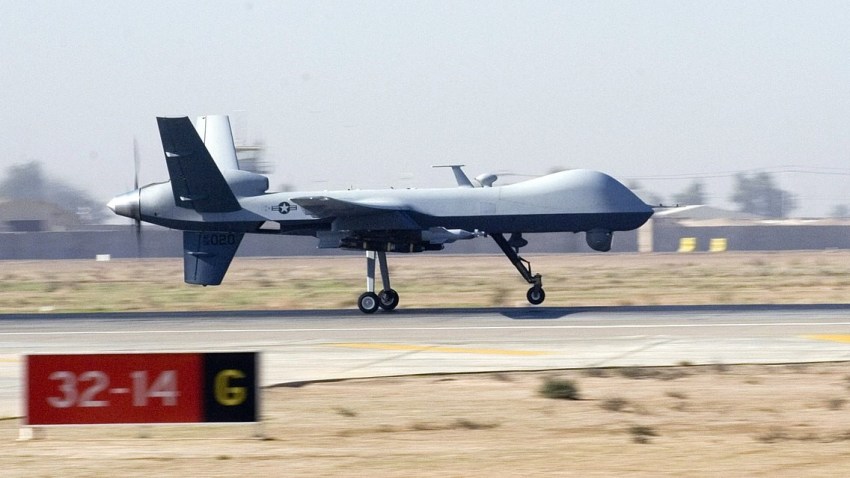Despite our strong preference for the detention and prosecution of terrorists, sometimes this approach is foreclosed. Al-Qaida and its affiliates try to gain foothold in some of the most distant and unforgiving places on Earth. . . . In some of these places—such as parts of Somalia and Yemen—the state only has the most tenuous reach into the territory. In other cases, the state lacks the capacity or will to take action. And it’s also not possible for America to simply deploy a team of Special Forces to capture every terrorist. . . . So it is in this context that the United States has taken lethal, targeted action against al-Qaida and its associated forces, including with remotely piloted aircraft commonly referred to as drones.
Although the technology used in drone strikes may be new, using limited force to strike terrorists, insurgents, bandits, pirates or raiders beyond the limits of civilization is not. Nations and empires have launched what are called “spoiling attacks” for most of recorded history. Drone strikes are simply the latest method. But is it a good idea?
To be effective, any strategy must be suitable, feasible and acceptable. Suitability means that the strategy must have a reasonably good chance of attaining the ultimate objective. Drone strikes against terrorists and insurgents won’t eradicate them, at least in the short term. Violent extremist organizations seem to have an adequate source of recruits and supporters. But there is evidence that drone attacks limit the ability of insurgents and terrorists to function. Drones—and the piloted alternative capabilities provided to Colombia and Yemen—make it hard for them to move, meet and train. When respected, well-connected leaders are killed and replaced with less experienced ones, organizational effectiveness declines.
Feasibility means that the resources must exist to implement a strategy. Drone strikes pass this test as well. They are not cheap, but they are more economical than using the U.S. military to control areas where insurgents and terrorists find sanctuary. Using them is also more economical than suffering another attack on the scale of Sept. 11.
The big issue, then, is acceptability: Will the American public and U.S. allies continue to accept the use of drones to kill insurgents and terrorists? Indications are that they will, given the three enduring dilemmas of America’s conflict with al-Qaida. One dilemma is that the conflict forces the United States to sustain relationships with weak, flawed partners unwilling or unable to quell sympathy for extremism, limit corruption and end the political exclusion of nonelite groups, or to build an economy robust enough to provide adequate jobs and government services, particularly in the hinterlands or megacity slums. The less the United States embraces those unsavory partners, the better. The second dilemma is that the conflict with al-Qaida compels the United States to tolerate methods antithetical to national values and preferences, whether long-term detention and interrogation of extremists or strikes at terrorists and insurgents who hide among noncombatants. The third dilemma is that the conflict is one where an unambiguous, decisive victory—the kind Americans instinctively prefer—is unattainable at a reasonable cost if at all. Thus the threat must be tolerated and managed, probably for decades, possibly even longer.
All this suggests that while the use of drones against insurgents and terrorists is not preferable or optimal, it is suitable, feasible and acceptable. Thus the United States is unlikely to abandon it altogether and will instead continue to refine it. Helping partners obtain their own capability for targeted killing is one such type of refinement.
Still, this kind of assistance does entail risk. When the U.S. launches a targeted killing, indications are that the bar is high in terms of the probability of getting the right target, limiting the chances that other people will be killed and ensuring that the strike is necessary. Other nations may not apply the same standards. The less control the United States has over targeted killings by its partners, the greater the chance that they will take place in a way that Americans would object to. But if the United States rejects requests from partners to develop the capability for targeted killing, they will simply find other means to carry out those strikes or buy the technology commercially or from some other nation like Russia or China. U.S. involvement does not guarantee that Washington will control targeted killings, but the absence of U.S. involvement guarantees that Washington will have no influence over them. Supplying the capability to its partners gives the United States at least a bit of leverage but also a bit of distance from the attacks.
Another risk, as James Igoe Walsh argues, is that having a drone capability may allow governments “to avoid taking steps that the United States considers more effective in countering local insurgencies,” specifically addressing the underlying political and economic factors. This is true, but the absence of such technology will not motivate governments to make fundamental changes if they already aren’t doing so. It is unlikely that a government like Pakistan’s or Yemen’s will reject reform simply because it has a new method of targeted killing.
Tragically, it is hard to uninvent a technology of violence, particularly one like drones that has nonmilitary applications. Drone capability will proliferate no matter what the United States does or doesn’t do. So long as extremists plot violence while hidden among civilians, targeted killings will persist. Helping friendly regimes with the process, while risky, at least sustains a bit of American leverage.
Steven Metz is a defense analyst and the author of "Iraq and the Evolution of American Strategy." His weekly WPR column, Strategic Horizons, appears every Wednesday. You can follow him on Twitter @steven_metz.
Photo: An MQ-9 Reaper unmanned aerial vehicle lands at Joint Base Balad, Iraq, November 2008 (U.S. Air Force photo by Erik Gudmundson). Strategic Horizons: Amid Debate, U.S. Shares Drone Approach With Partners

